X-Wing Sudoku Technique: Use Cases and Examples
If you can solve easy Sudoku puzzles in a snap, then you're ready to work on more difficult puzzles and use advanced strategies like the X-wing technique. Suitable for intermediate to hard Sudoku puzzles, this technique has you focus on a single candidate that appears in a pattern so you can eliminate candidates and solve puzzles faster and easier.
How to Find X-Wings
The X-wing technique is a Sudoku strategy named for the X-like pattern it forms when visualized on the Sudoku grid. It helps eliminate candidates by identifying where a specific candidate is restricted to exactly two possible cells in two rows or columns.
Because the candidate must appear in one of these two cells in each row (or column), it cannot appear in any other cell within the same columns (or rows). This allows all other instances of that candidate in the affected columns or rows to be removed, which can lead to a chain reaction of answers or eliminations.
For example, in the grid below, the candidate number 3 occurs just twice in rows 1 and 5, but it occurs multiple times in columns F and H. Any time 3 occurs in columns F and H outside of the X-wing pattern (F2, F6, H4, H6), it can be eliminated.
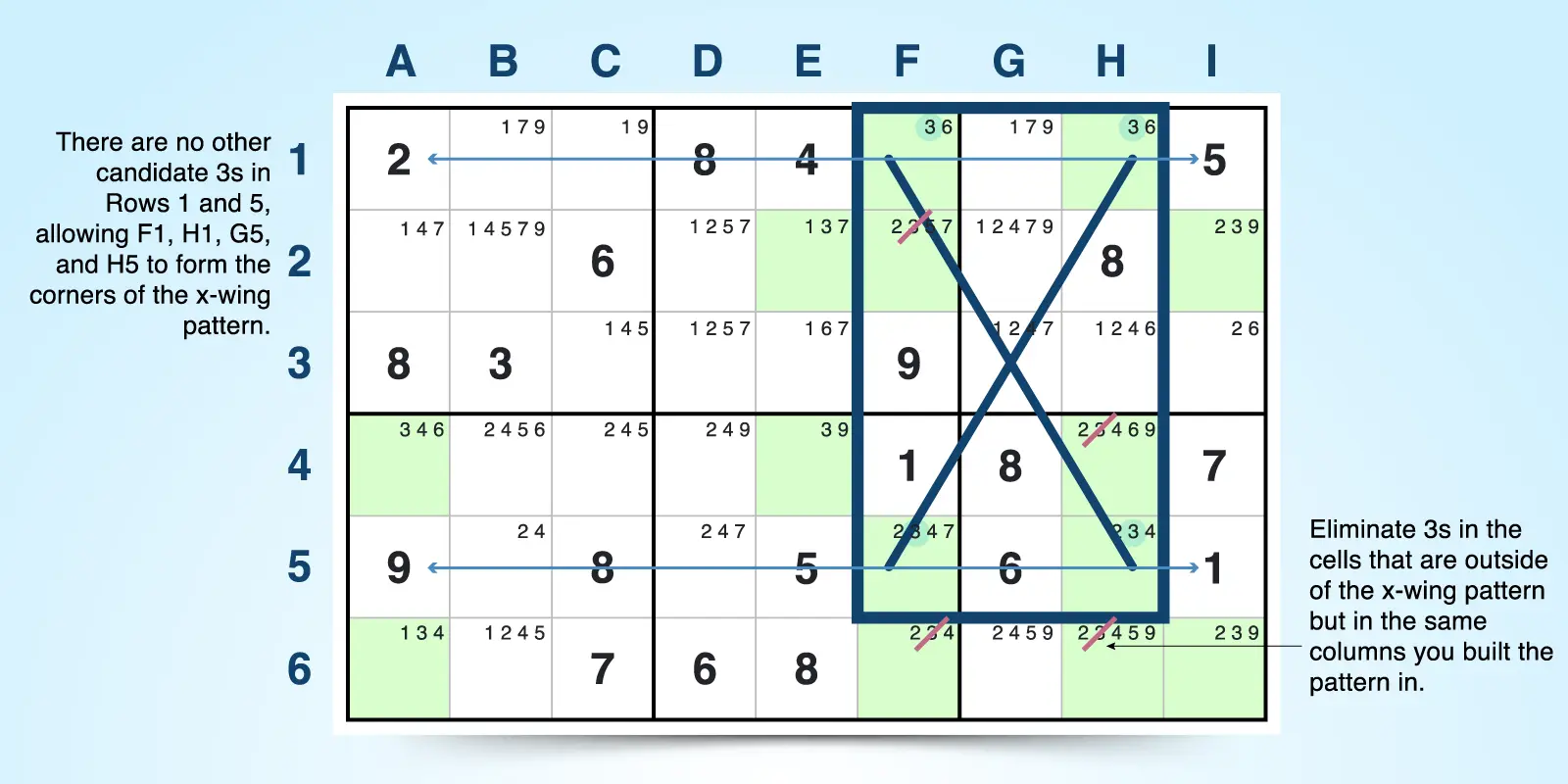
An X-wing can be orientated in two ways: horizontally (rows) or vertically (columns). Orientation refers to whether two rows or two columns have exactly two occurrences of the same candidate.
The orientation of the X-wing determines where you can eliminate candidates. In a horizontal X-wing, you eliminate candidates from the two shared columns, and in a vertical X-wing, you eliminate candidates from the two shared rows.
X-Wing Sudoku Examples
Because they can be hard to spot, these examples give you steps to find both types of X-wings in a Sudoku puzzle.
X-Wing with Horizontal Orientation
To find an X-wing with horizontal orientation, you're looking for a row that has just two occurrences of the same candidate. To do so, you need to note all the candidates by using pencil marks or electronic candidate mode and completely fill in all possible candidates.
Although it's an advanced Sudoku technique, you can easily find an X-wing by following these simple steps:
- Identify a single candidate that appears only twice in a single row. Scan the first row for a candidate that appears just twice. If you find one, go on to the next step. If not, continue looking in the second row, and so on until you find one. For example, the candidate 4 appears just twice in row 2 (C2, E2).
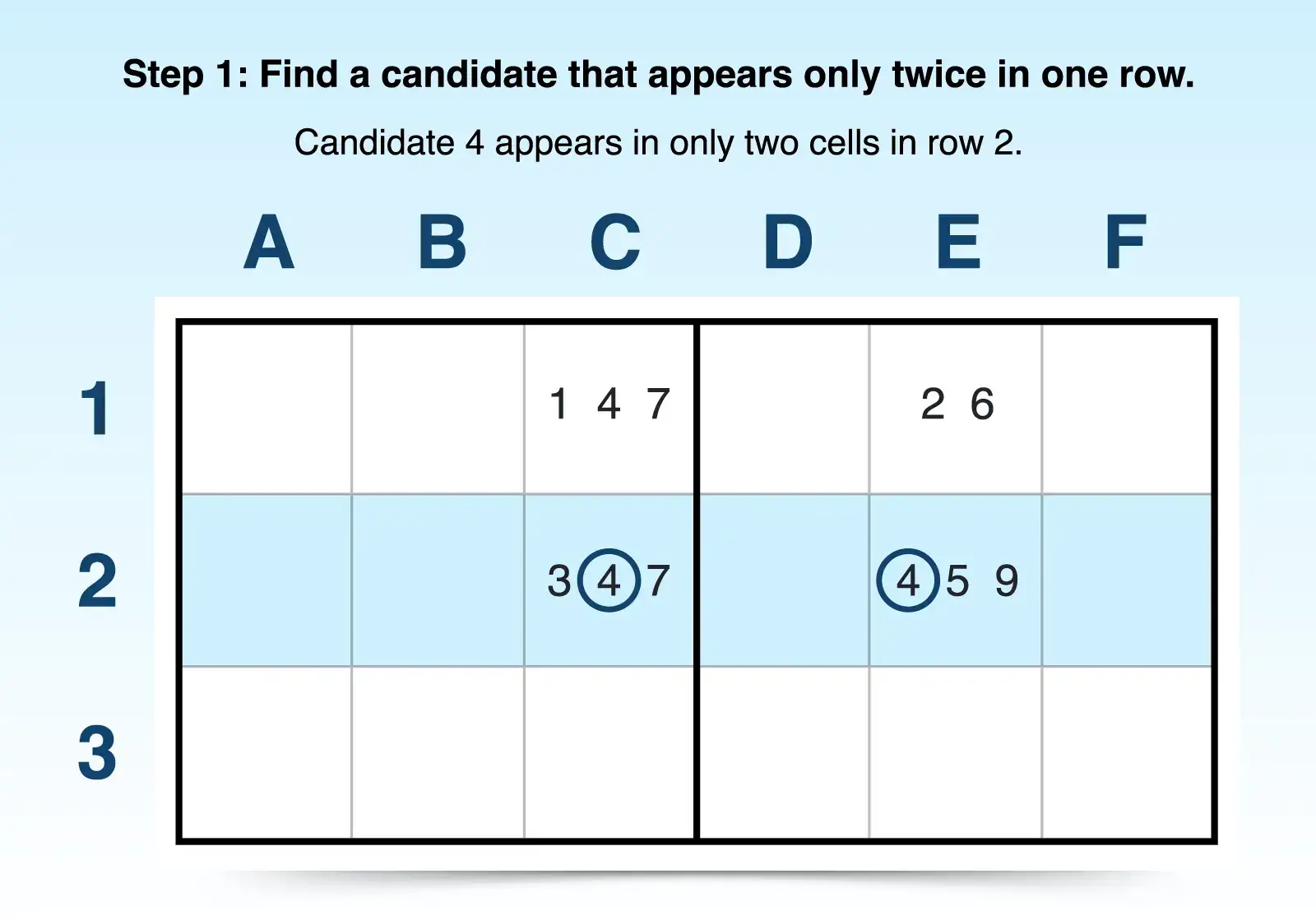
- Check to see if that candidate appears only twice in another row and ensure it's in the same two columns. Once you've found a candidate that appears just twice in a row, look down each column in which it appears. Confirm whether the same candidate appears only once again in each column and that they share the same row. For example, the candidate 4 appears just once again in columns C and E, sharing row 6.
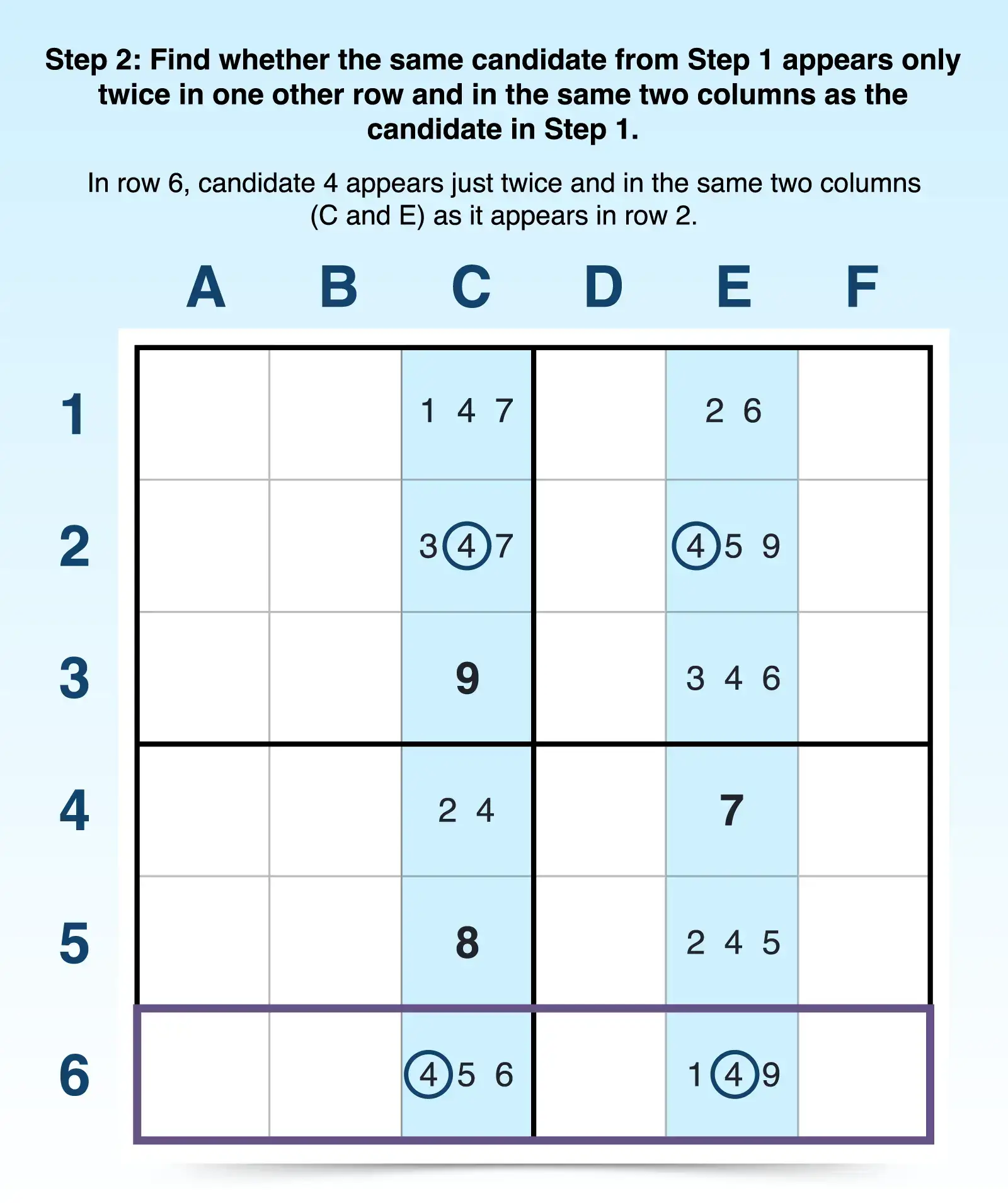
- Eliminate instances of the candidate that aren't part of the pattern but fall within the same columns. If a candidate appears in the pattern, creating the points of an X, then the candidate must be an answer in one of the rows, so it will appear in one of the cells in each column. Therefore, you can eliminate occurrences of that candidate from other cells within those two columns. For example, any 4s in columns C and E that aren't in rows 2 or 6 can be crossed out and eliminated. Note that cells in an X-wing form a rectangle, with the cells that share the same candidate as the corners, but only the corners forming the X are part of the pattern, not the entire rectangle.
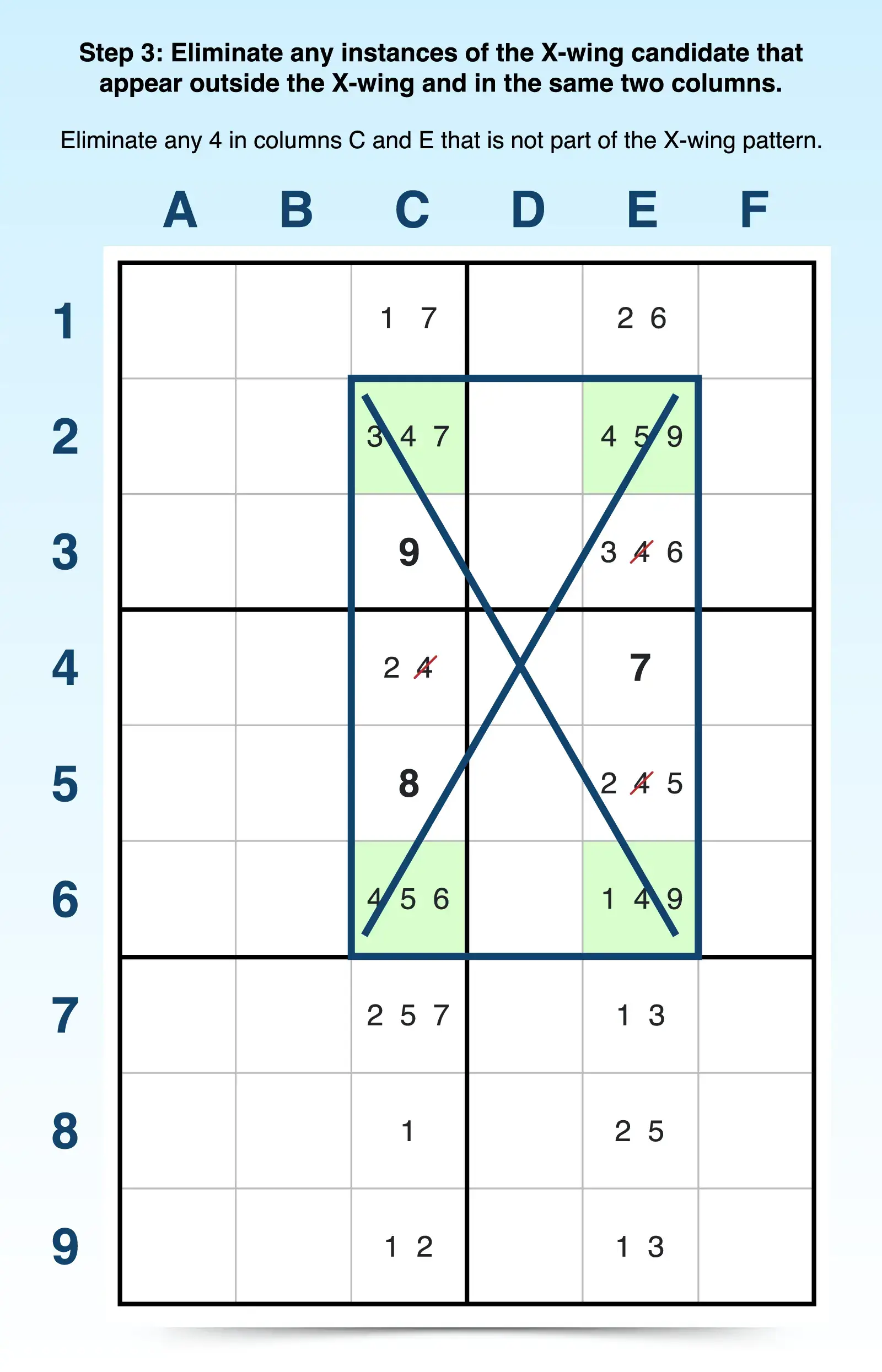
X-Wing with Vertical Orientation
To find an X-wing with vertical orientation, you still need to mark all the candidates in your puzzles using pencil marks or candidate mode. But instead of looking for only two occurrences in a row, you look for two occurrences in a single column, following the same principles as you do for horizontal orientation. Just follow these steps:
- Circle a single candidate that appears only twice in a single column. Scan the first column for a candidate that appears just twice. If you find one, go on to the next step. If not, continue looking in the second column, and so on until you find one. For example, the candidate 6 appears just twice in column B (B3, B7).
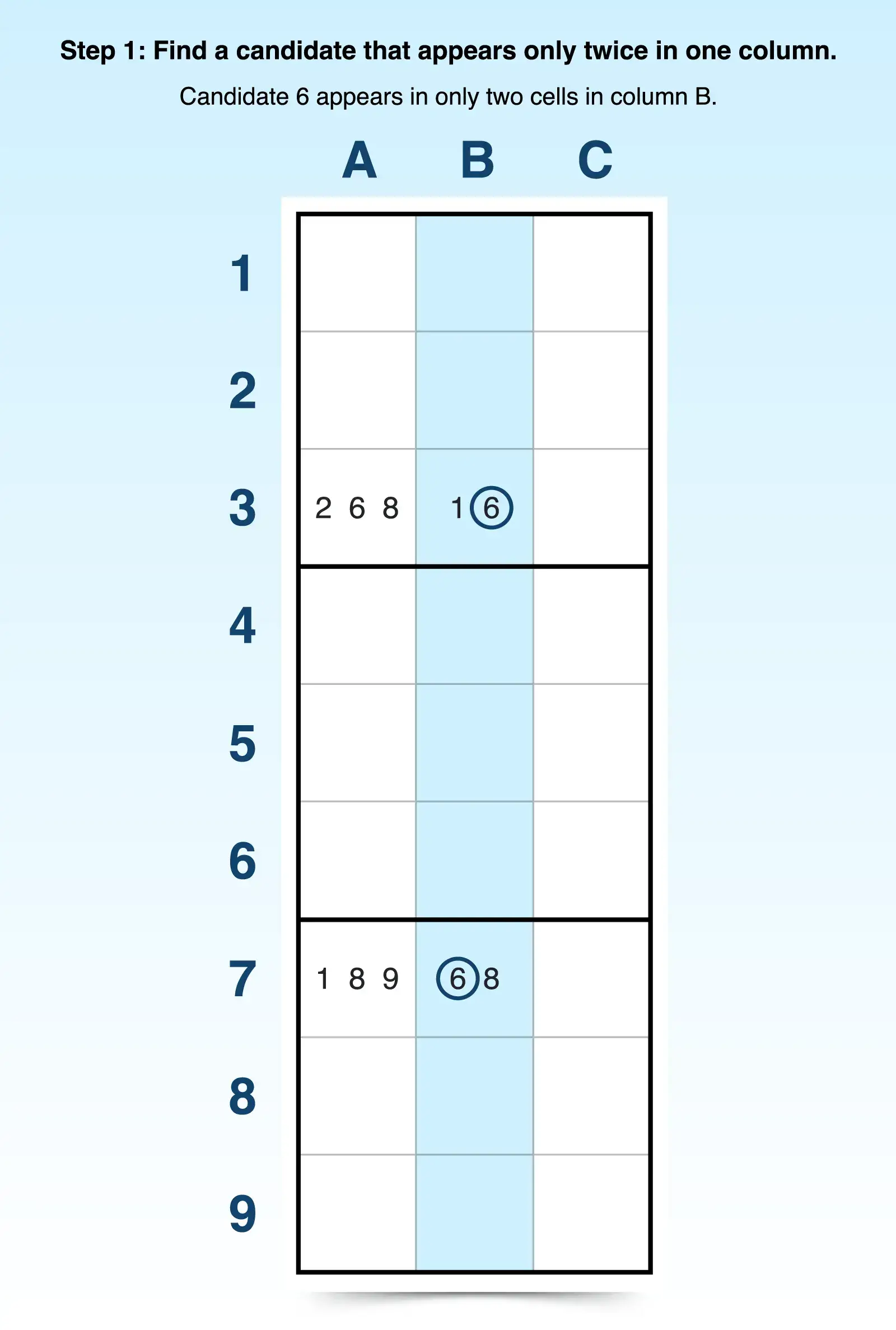
- Check to see if that candidate appears only twice in another column and ensure it's in the same two rows as it appears in Step 1. Once you've found a candidate that appears just twice in a column, look across each row in which it appears. Confirm whether the same candidate appears again in only one other column and within the same rows. For example, the candidate 6 appears only twice in column D, specifically in rows 3 and 7 (D3, D7).

- Eliminate instances of the candidate that aren't part of the pattern but fall within the same rows. If a candidate appears in the pattern, creating the points of an X, then the candidate must be an answer in one of the columns, so it will appear in one of the cells in each row. Therefore, you can eliminate occurrences of that candidate from other cells within those two rows. For example, any 6s in rows 3 and 7 that aren't in columns B and D can be crossed out and eliminated. Note that cells in an X-wing form a rectangle, with the cells that share the same candidate as the corners, but only the corners are part of the pattern, not the entire rectangle.
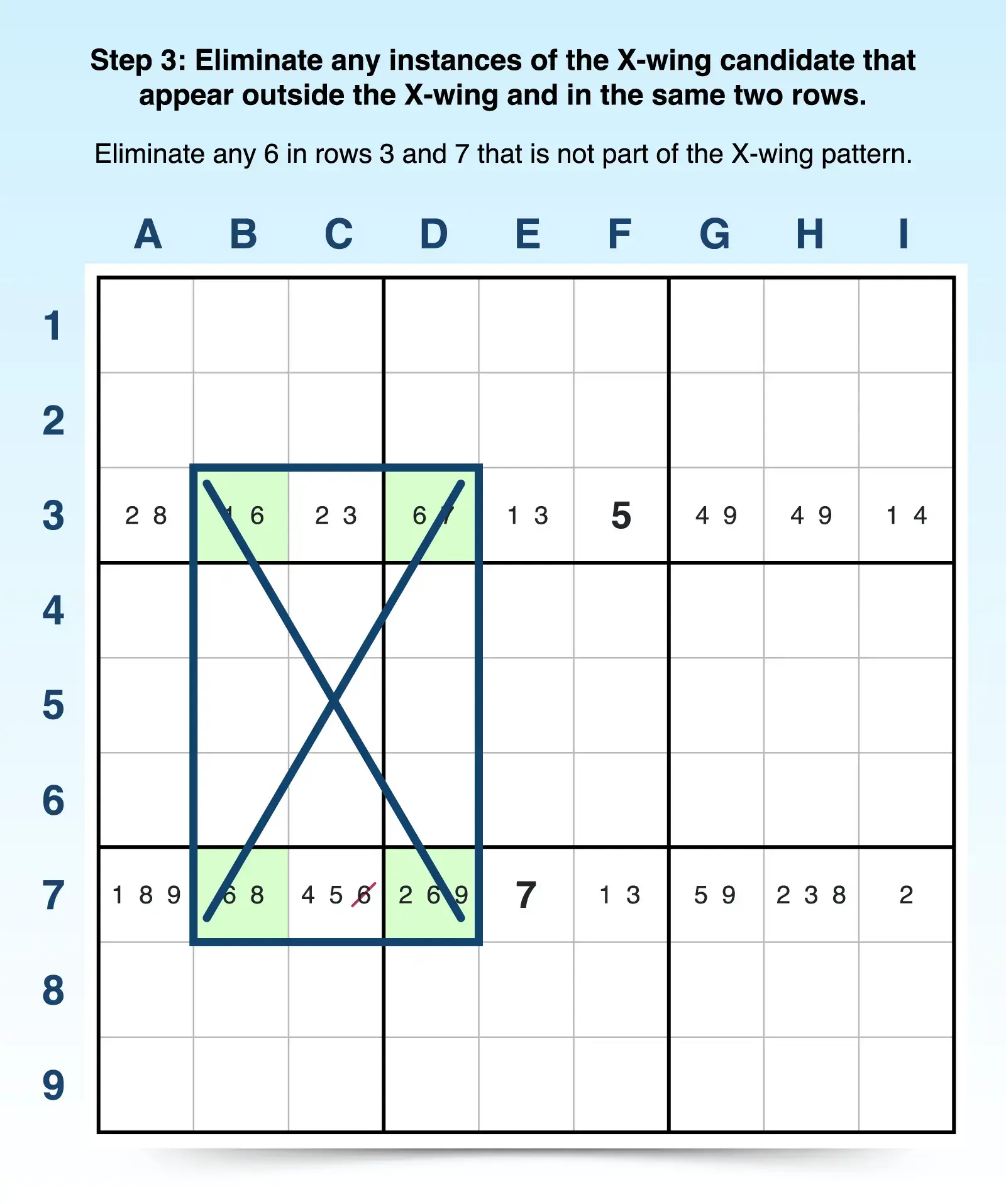
Whether you're an advanced solver or just getting started with solving techniques, the best way to practice the X-wing strategy is to dig into a puzzle. So play Sudoku online and practice the Sudoku X-wing technique and try out more strategies like the Y-wing technique as you explore our archive for even more variety.